Let kids move!
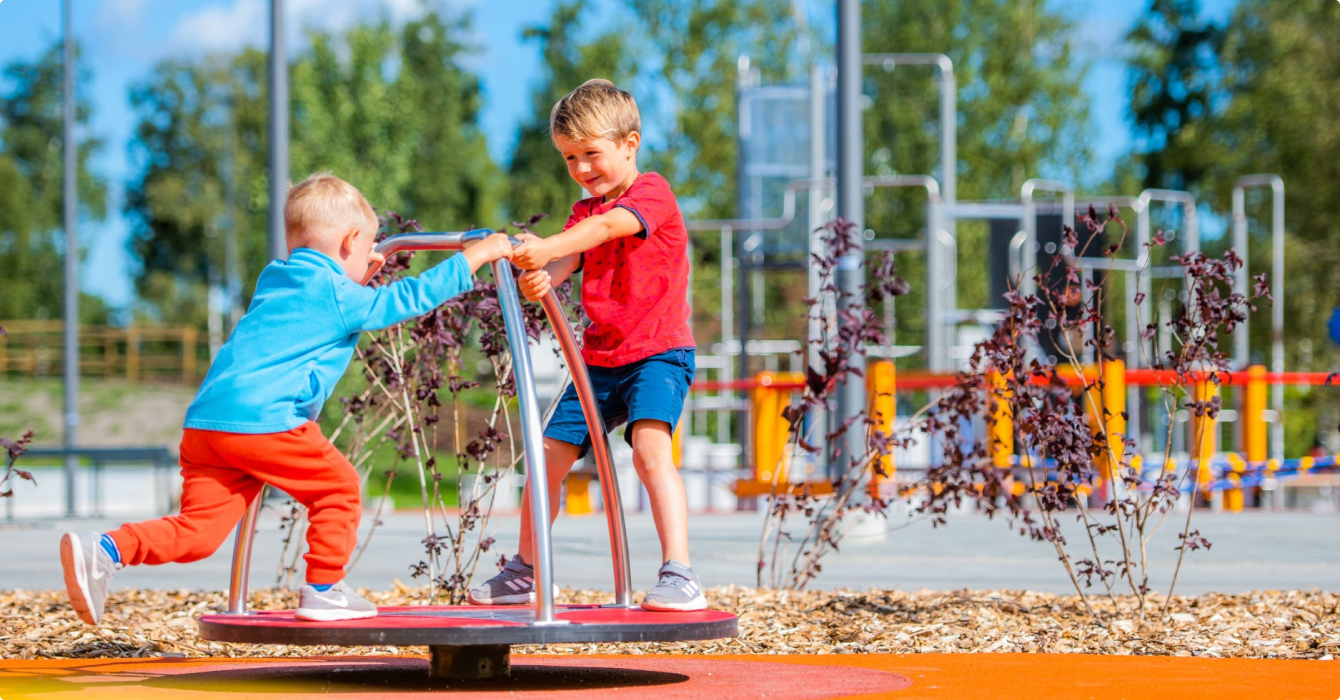
“Make sure you don’t get sweaty!” is the cry of many caring mothers when seeing their child head outside to play. Behind that cry is usually a concern that is held up by a belief that a sweaty child can easily catch a cold and fall ill. And a good parent wants to avoid that. There is rarely talk about the fact that a child needs to sweat and get up their pulse while being physically active. Let’s try to shed light on this.
By physical activity we mean any movement performed with the help of skeletal muscles which takes the mover’s energy consumption above the level of rest. Children should be active for at least 60 minutes each day. The child’s natural physical activity increases from age of 3 to 4 until the age of 7 to 8. The maximum reached by this time remains more or less steady until the child hits puberty and then begins to decrease. With that said, the age of 12-15 years is very important for bone development. The physical activity of boys is 10-15% higher than that of girls.
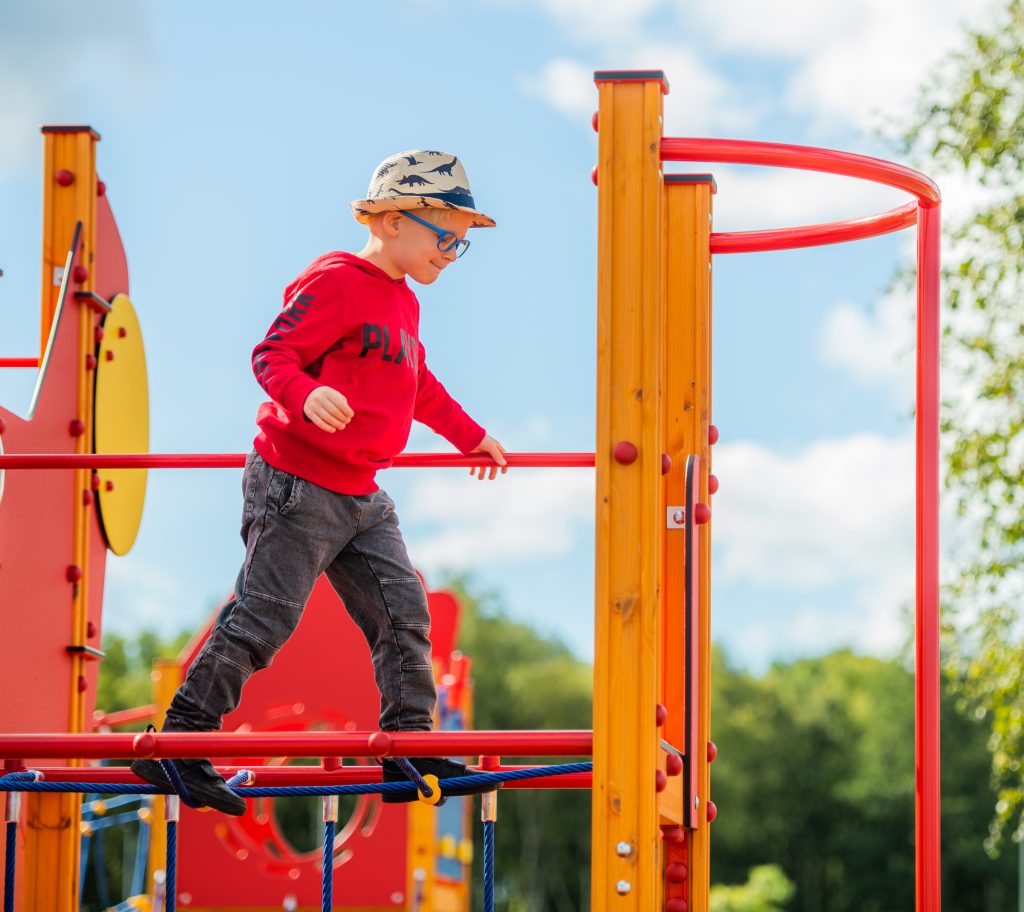
But why does a child have to move at all? There are several reasons:
• a child who moves is healthier
• their physical self-image is more positive (one is more satisfied with one’s body)
• they are more likely to remain active as an adult
• a physically active child usually stays within healthy weight limits (also later as an adult)
• physical activity in childhood strengthens one’s bones
When encouraging your child to move, it is very important to remember that the movement must be varied. Physical activity should include running, jumping, dancing and sports. For example, cycling and swimming do not stimulate bone development. Most importantly, exercise is effective enough when it makes the child sweat and breathe faster.
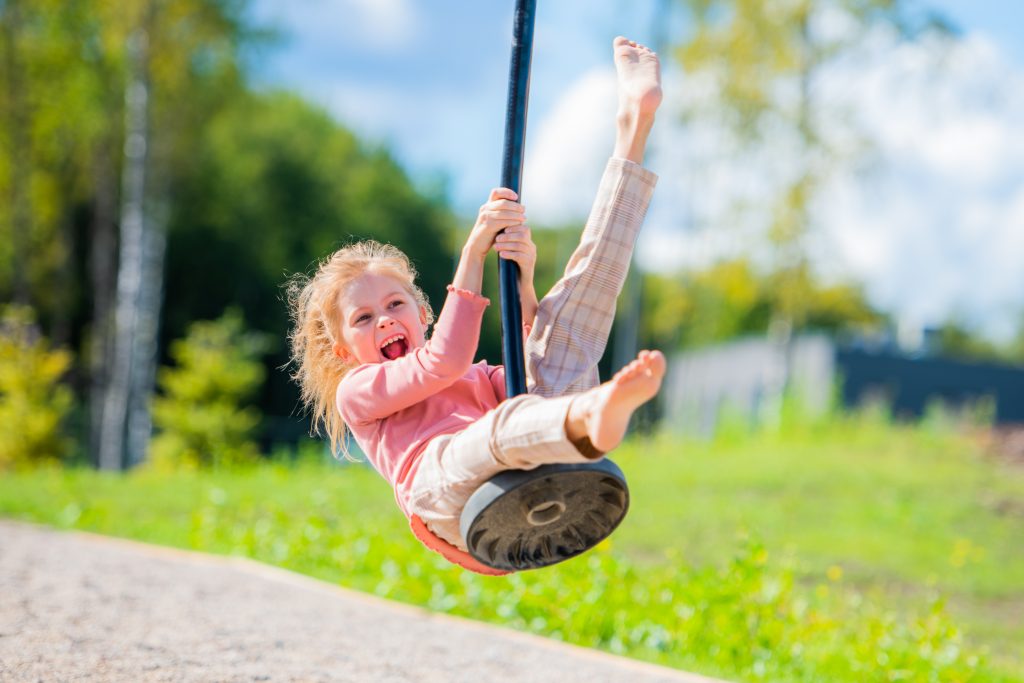
Just as children are different, so are their physical abilities (endurance, strength, flexibility, speed, dexterity). Age plays a big role here, which is why we have clearly defined attractions for specific age groups. Various climbing equipment, pipes and tunnels, balancing equipment, trampolines, equipment for throwing exercises and coordination development, role-playing games, etc. All these are chosen based on the age groups and their abilities.
Modern playgrounds, especially larger ones, offer a great variety of activities for children of different ages. A comparison with circuit training known to athletic adults is not too far off. Circuit training is a type of training where different muscle groups are methodically approached and the training has a wholesome effect on the entire body. A playground offers exactly the same type of training, only in a playful way that is suitable for the child’s level.
But what about school children and teenagers who sit most of the time? A school year can be basically called the sitting season. And that is not a joke! Fortunately, more attention is now also getting paid to improving physical activity in schools. Physical education is not a daily class, so pupils should still leave their seats to climb, hang and scramble on a daily basis. More and more schools are now looking into solutions that would offer children enough choice to move between classes.
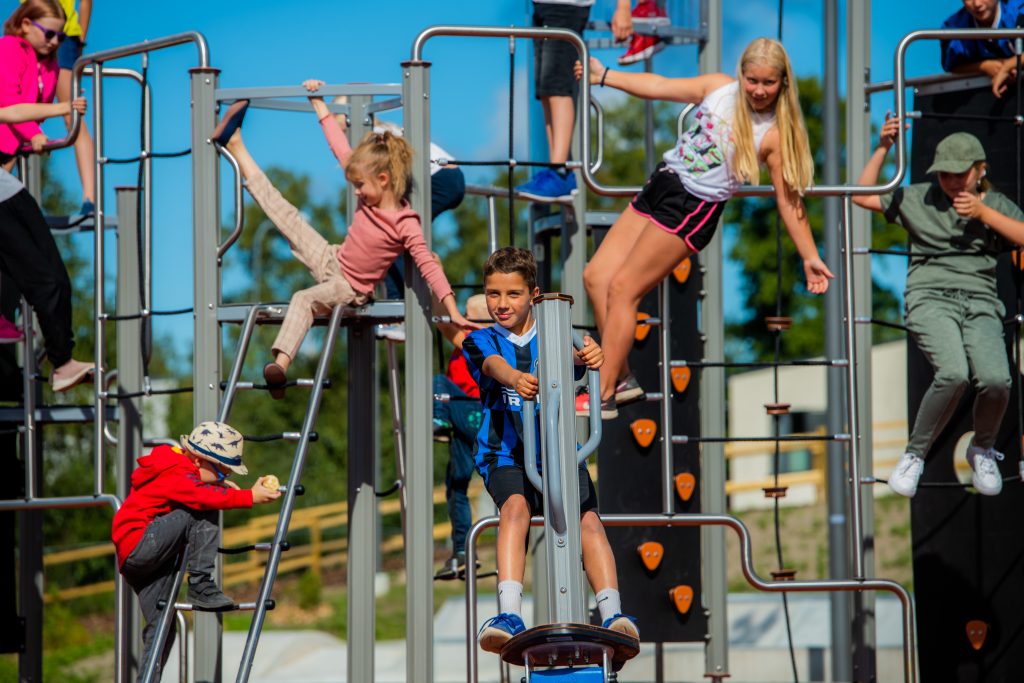
One of our most popular products is the balance track called Compass that is suitable for both indoor and outdoor conditions. The choice of sports equipment is large, and in addition to balance tracks, the various stretching walls, booms, activity panels, etc. are well suited for schools and for indoor spaces. If exercise becomes a natural part of every school day, we can be sure that we give our children a good education together with good health!
The story uses Marion Piisang’s research work “Children and Movement” which was commissioned by Tiptiptap OÜ.
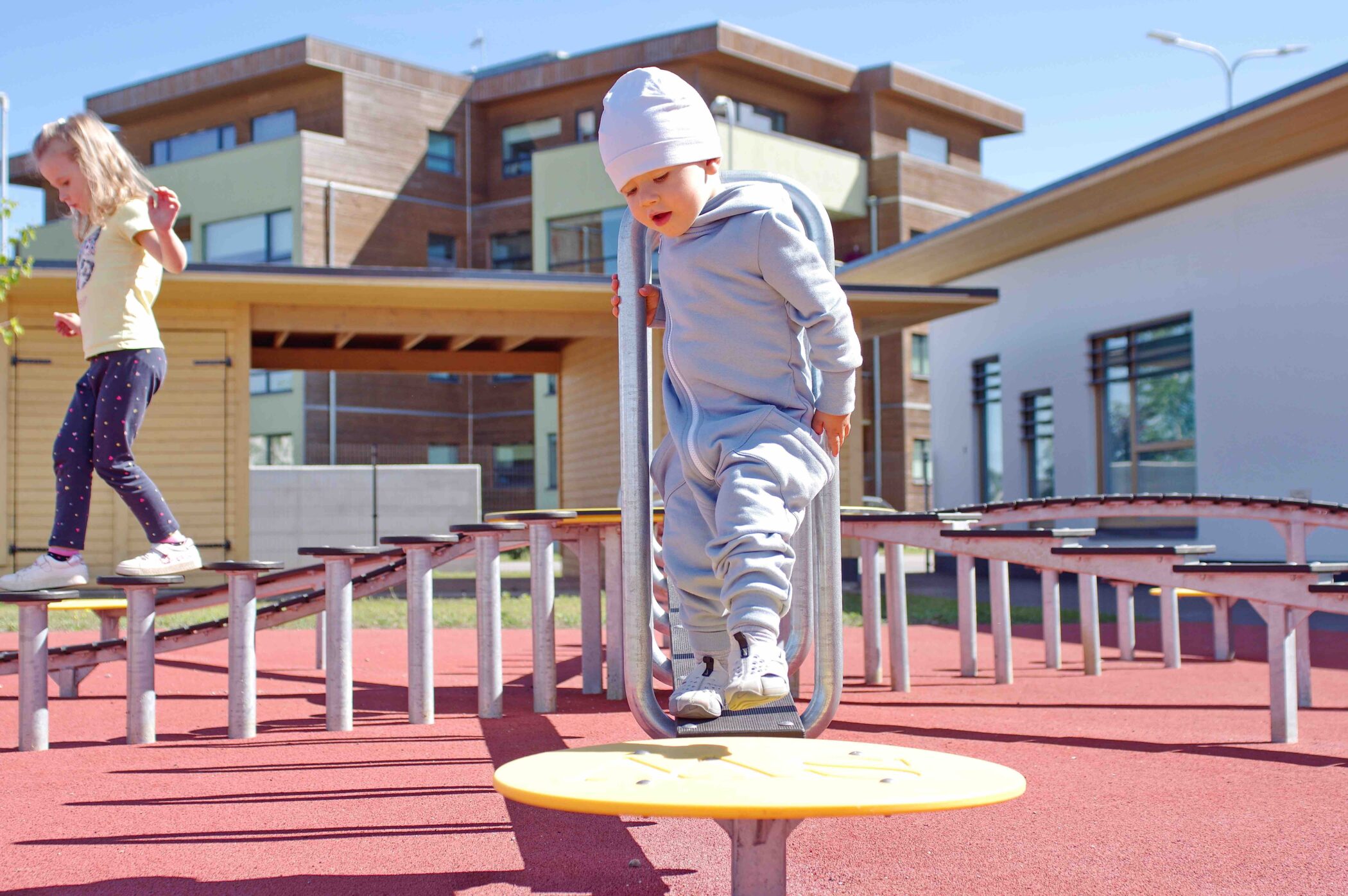 Blog
BlogBalance comes gradually
Physical sense of balance is so intrinsic that we usually don’t think about its importance. […]
Mar 28, 20233 min read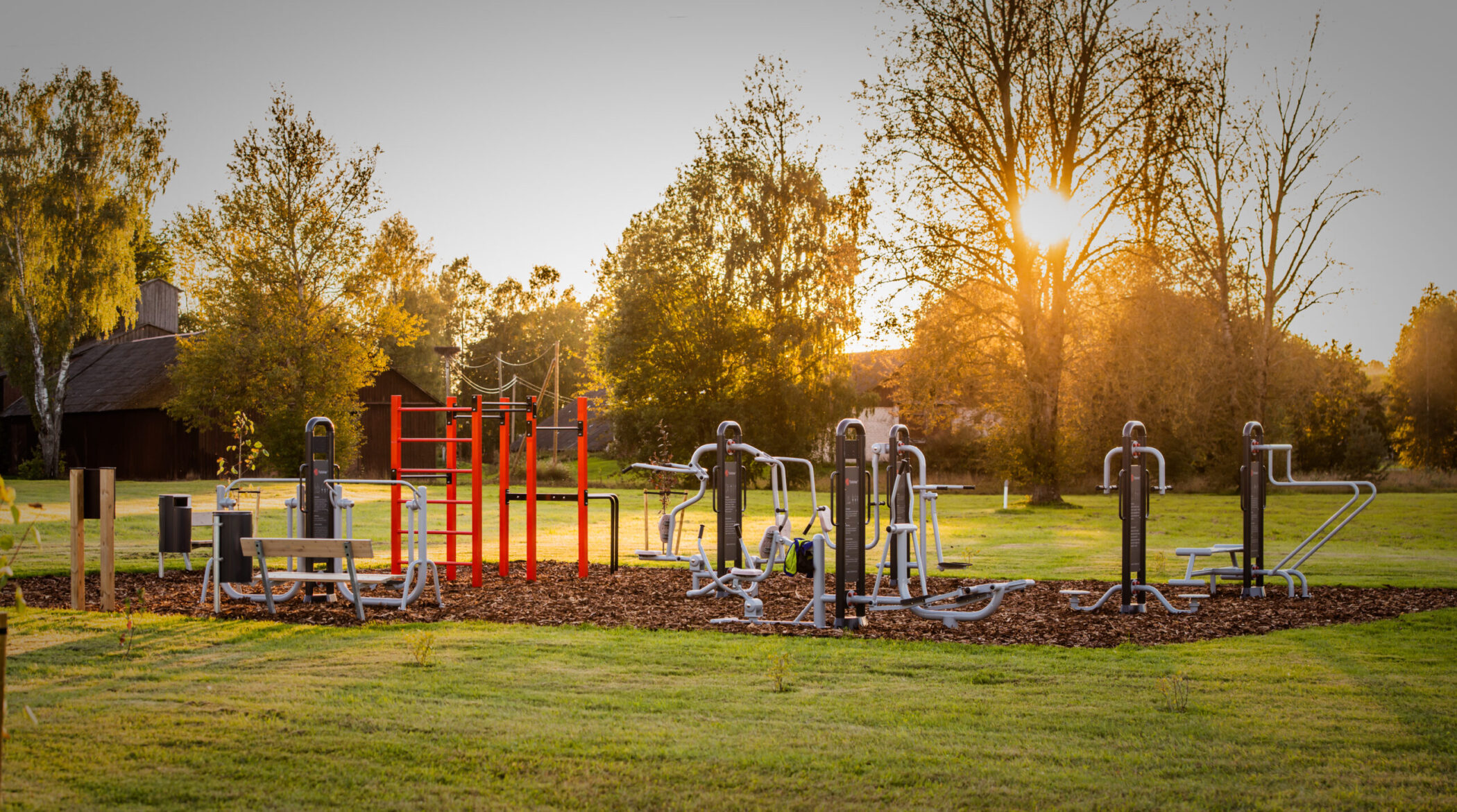 Blog
BlogMovement in fresh air – how to choose the right training device?
Movement in fresh air and training to keep your body and mind healthy is a […]
Jun 14, 20213 min read